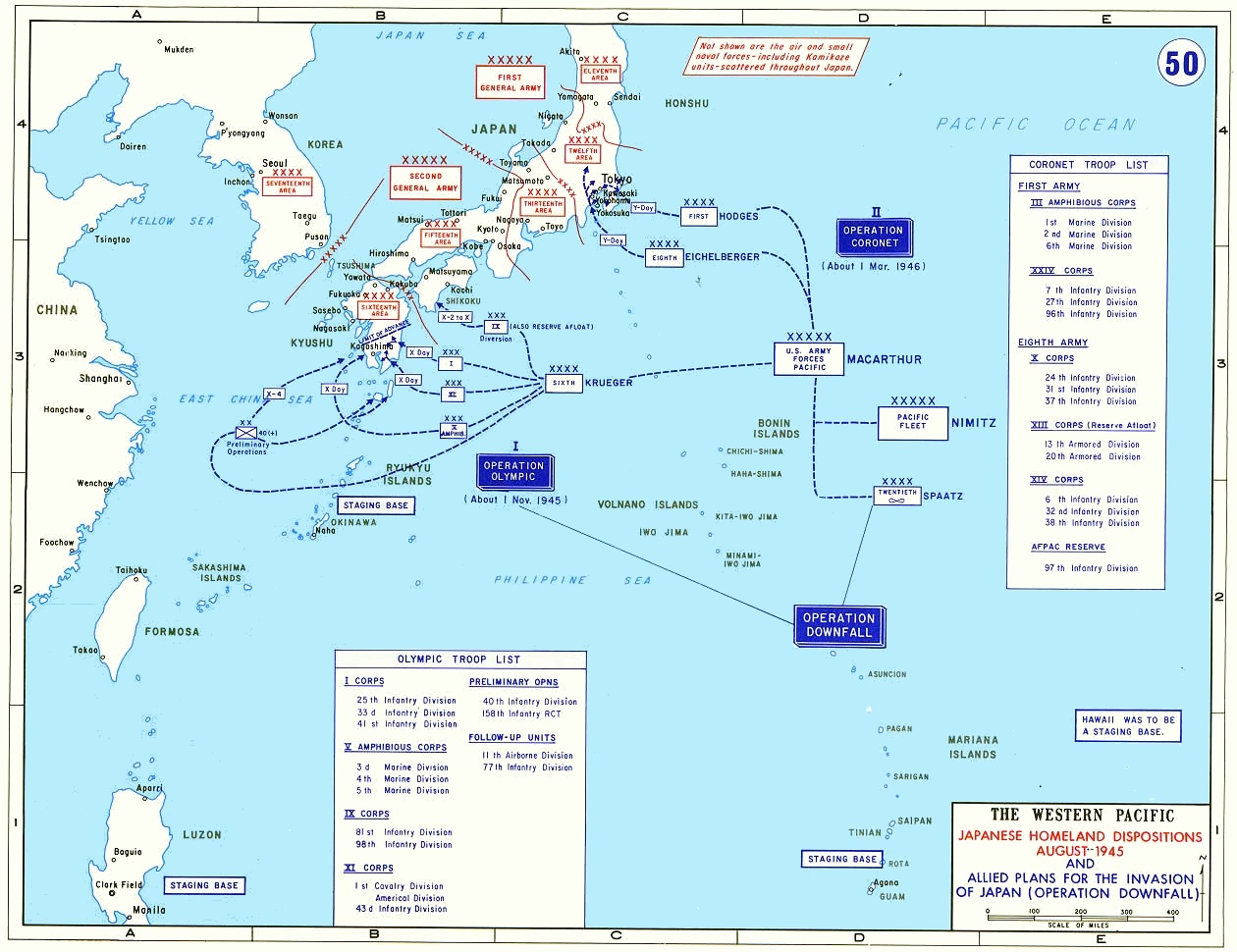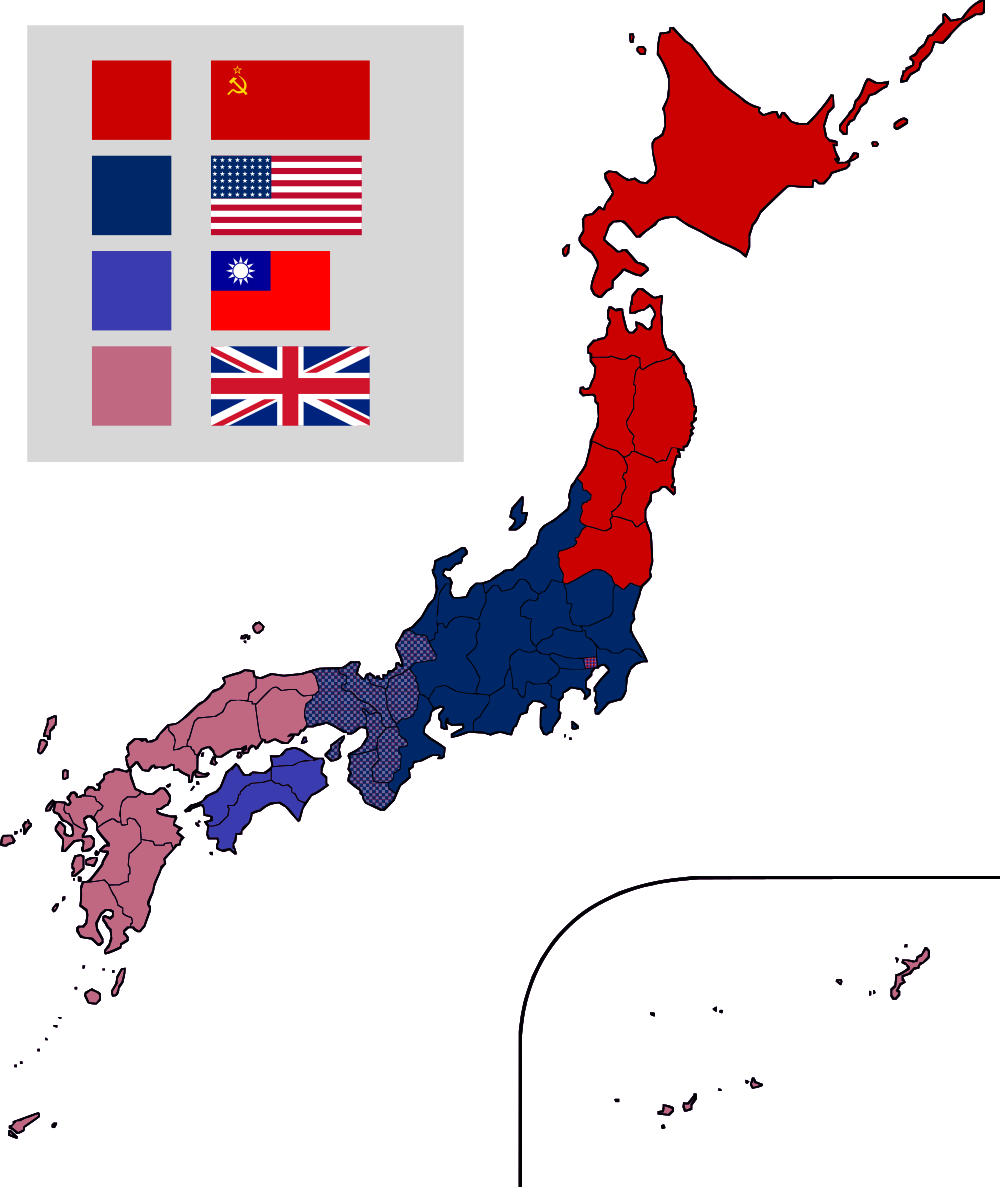Practically guaranteed. The plans and assets were already in place by mid-August, Stalin just needed to give the go.
Chances of success? Probably high. The Japanese had very little understanding of Soviet amphibious assault doctrine at this time, as the Kuriles and North Korean landings demonstrated, not to mention the whole detail of their forces being in the wrong place but something could still go wrong.
Terms of division? North/South definitely. The bigger question is whether the Soviet zone would stop with Hokkaido or if they are able to carry out a second invasion into Honshu. The logistics there are questionable and it would require a significant pause even if feasible.
Doug Muir had a post about this some years ago in soc.history.what-if:
https://groups.google.com/d/msg/soc.history.what-if/dZ5YlCyUuuo/DBQXF9ypq2QJ (he had a similar post here at
https://www.alternatehistory.com/discussion/showpost.php?p=3875365&postcount=19)
***
Just to nail this one down ('cause it does keep popping up...)
1) Stalin asked Zhukov how many men he'd need to invade Hokkaido. "Two
armies," Zhukov replied. That's armies -- not divisions, armies. Don't know
how many divisions in a Soviet army but I'm guessing that's at least a couple
of hundred thousand men.
Both Zhukov and Vassilevsky hated the idea of invading the home islands.
2) In August '45, Soviets launched exactly one (1) amphibious assault. This
was against Shumshun, in the Kuriles. This islands was held by lightly armed
reserve troops without artillery or air support. Soviets took 1500 casualties
(to 1000 Japanese) in two days of fighting. Both sides then called a truce,
which turned into a Japanese surrender a few days later, since this battle
took place in mid-August.
Other Kuriles were occupied peacefully in late August and early September,
after Japan had surrendered.
3) Soviet sealift capability in this theater is hinted at in the description
of the fighting on Shumshun. Ships broke down because of lack of lubricant,
and Soviet troops were reduced to living on dry biscuit. This after six
months of preparation. Not exactly Overlord.
Soviets were using minesweepers to land occupation troops in the northern
Kuriles, which reinforces the idea that they didn't have too many landing
craft on hand.
4) Soviets invaded south Sakhalin after six months of preparation with clear
numerical superiority, total command of the air, and overwhelming superiority
in armor and artillery. In this, they were following much the same
sledge-hammer model as in their attack on the Kwantung Army in Manchuria.
However, the results were not the same. While the Kwantung Army more or less
collapsed, Japanese resistance on Sakhalin was "stubborn" and "savage" (Soviet
description... and keep in mind that these troops were veterans of combat
against the Germans, thus not likely to use such words lightly).
I have found no record of Red Army casualties, but note that it took nearly
three weeks of fighting -- August 9 to August 28 -- for the Red Army to
capture Otomori, near the southern end of the island. Apparently there was
still heavy fighting on Sakhalin two weeks after the Japanese surrender!
5) Soviet plans for landings in Hokkaido were limited in scope; they were
intended to seize beachheads and a modest amount of territory in order to
secure Stalin a voice in the occupation of Japan. AFAICT, the Soviets never
had any serious plan -- comparable to the American Olympic or Coronet -- to
actually conquer Hokkaido.
Note that Stalin tried to gain this at the bargaining table, asking Truman to
grant him an occupation zone in northern Hokkaido "in accord with the spirit
of Yalta"... a proposal that Truman firmly rejected.
So, to summarize... Soviets in Hokkaido, just maybe, though I doubt it.
Soviets in Honshu, no.

